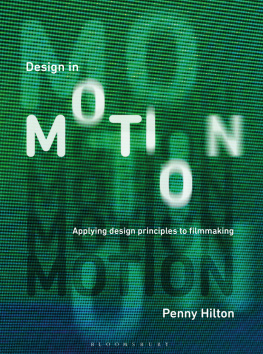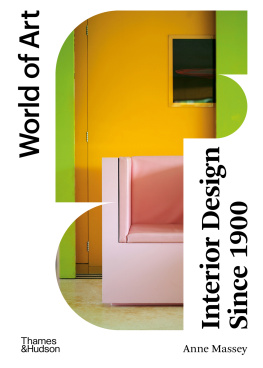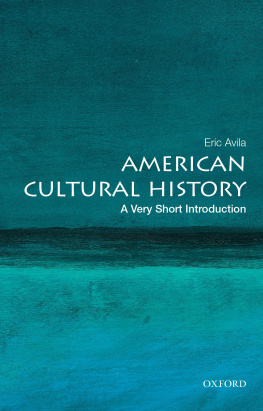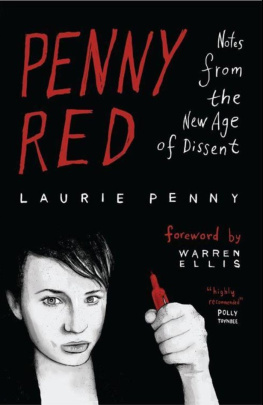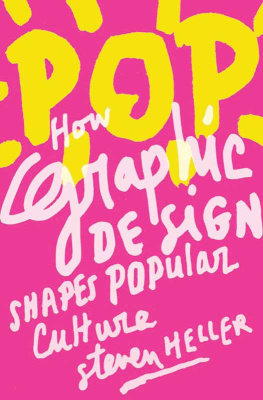Penny Sparke - An Introduction to Design and Culture 1900 to the Present
Here you can read online Penny Sparke - An Introduction to Design and Culture 1900 to the Present full text of the book (entire story) in english for free. Download pdf and epub, get meaning, cover and reviews about this ebook. year: 2013, publisher: Routledge, genre: Art / Science. Description of the work, (preface) as well as reviews are available. Best literature library LitArk.com created for fans of good reading and offers a wide selection of genres:
Romance novel
Science fiction
Adventure
Detective
Science
History
Home and family
Prose
Art
Politics
Computer
Non-fiction
Religion
Business
Children
Humor
Choose a favorite category and find really read worthwhile books. Enjoy immersion in the world of imagination, feel the emotions of the characters or learn something new for yourself, make an fascinating discovery.

- Book:An Introduction to Design and Culture 1900 to the Present
- Author:
- Publisher:Routledge
- Genre:
- Year:2013
- Rating:5 / 5
- Favourites:Add to favourites
- Your mark:
- 100
- 1
- 2
- 3
- 4
- 5
An Introduction to Design and Culture 1900 to the Present: summary, description and annotation
We offer to read an annotation, description, summary or preface (depends on what the author of the book "An Introduction to Design and Culture 1900 to the Present" wrote himself). If you haven't found the necessary information about the book — write in the comments, we will try to find it.
An Introduction to Design and Culture 1900 to the Present — read online for free the complete book (whole text) full work
Below is the text of the book, divided by pages. System saving the place of the last page read, allows you to conveniently read the book "An Introduction to Design and Culture 1900 to the Present" online for free, without having to search again every time where you left off. Put a bookmark, and you can go to the page where you finished reading at any time.
Font size:
Interval:
Bookmark:
An Introduction to Design and Culture
An Introduction to Design and Culture provides students with an comprehensive guide to the changing relationship between design and culture from 1900 to the present day, with an emphasis on five main themes:
design and consumption;
design and technology;
the design profession;
design theory; and
design and identities.
Design is defined broadly to cover product and furniture design, interior design, fashion design and graphic design. The new edition is international in scope and emphasises the increasingly global role played by design as it gets nearer to the present day.
Taking a broadly chronological approach, Professor Sparke employs historical methods to show how these themes were all implicated by designs progress through the twentieth century and into the twenty-first century. Illustrations throughout the text demonstrate the breadth of design and its multiple contexts, and design examples such as those of the Sony Walkman, contemporary design in China and James Dyson are used to elaborate key ideas.
Penny Sparke is a Professor of Design History and a Pro Vice-Chancellor (Research), Director, Modern Interiors Research Centre, Kingston University. Her research interests include modern design and the modern interior with special interest in role of gender. She is currently researching the meaning of plants and flowers in the modern interior.
An Introduction to Design and Culture
1900 to the Present
Third edition
Penny Sparke

First published 2013
by Routledge
2 Park Square, Milton Park, Abingdon, Oxon OX14 4RN
Simultaneously published in the USA and Canada
by Routledge
711 Third Avenue, New York, NY 10017
Routledge is an imprint of the Taylor & Francis Group, an informa business
2013 Penny Sparke
The right of Penny Sparke to be identified as author of this work has been asserted by her in accordance with sections 77 and 78 of the Copyright, Designs and Patents Act 1988.
All rights reserved. No part of this book may be reprinted or reproduced or utilised in any form or by any electronic, mechanical, or other means, now known or hereafter invented, including photocopying and recording, or in any information storage or retrieval system, without permission in writing from the publishers.
Trademark notice: Product or corporate names may be trademarks or registered trademarks, and are used only for identification and explanation without intent to infringe.
British Library Cataloguing in Publication Data
A catalogue record for this book is available from the British Library
Library of Congress Cataloging in Publication Data
A catalog record for this book has been requested
ISBN: 978-0-415-68618-1 (hbk)
ISBN: 978-0-415-68619-8 (pbk)
ISBN: 978-0-203-12999-9 (ebk)
Typeset in Sabon
by FiSH Books Ltd, Enfield
Contents
Illustrations
Acknowledgements
This book could not have been written without all the support and stimulation I received over eighteen years spent teaching on the joint Royal College of Art/Victoria and Albert Museum History of Design Programme. My thanks go to all the staff I worked with there, among them Dr Gillian Naylor, Professor Jeremy Aynsley, Professor Christopher Breward, John Styles, Marta Ajmar and Helen Clifford. Special thanks go to the many visiting scholars too numerous to list here who presented seminars over the years and opened my eyes to new ideas emanating from a number of disciplines hitherto unfamiliar to me and which changed the way I thought about design. Above all it is to the students at both MA and PhD levels (especially, in the latter category, Quintin Colville, Trevor Keeble, Susie McKellar, Nik Maffei and Viviana Narotzky) that I owe the greatest thanks, as it is they who pushed the boundaries forward through their research, continually challenging my assumptions. I continue to be challenged by the PhD students I have supervised among them Emma Ferry, Fiona Fisher and Patricia Lara-Betancourt and I am supervising at Kingston University, as well as by the staff who teach Design History there. My contact with design tutors and students across a range of disciplines, both at the Royal College of Art and at Kingston University, has also ensured that I understand not only where design is coming from but also, I hope, where it is going.
At Routledge I would like to thank Rebecca Barden, Julene Knox (for energetic picture research) and Helen Faulkner. Above all I must thank John, Molly, Nancy and Celia for putting up with my spending too many holidays and weekends working on my laptop.
Every effort has been made to trace and acknowledge ownership of copyright. The publishers will be glad to make suitable arrangements with any copyright holders whom it has not been possible to contact.
Introduction
Twentieth-century design and culture revisited
Perhaps we should speak of a political economy of design.
This third edition of this book is a revised and updated version of the 2004 edition, itself an almost completely rewritten version of the original text I wrote back in the early 1980s, entitled An Introduction to Design and Culture in the Twentieth Century. Sitting down to rewrite the second edition, I had initially set out with the idea that I would simply add some new sections to accommodate the events of the intervening years. Very swiftly, however, I had realized that that was not going to be possible. Not only had many more things happened in the world of design since the 1980s, my perspective on the subject had also been utterly transformed by the vast amount of theoretical literature that had emerged since then. While the broad themes which directed the earlier text remained valid, something very substantial had happened in the intervening years, which meant that, if the new text was going to constitute a valid contribution from the perspective of the early twenty-first century, a much more radical overhaul was going to be needed.
Eight years later, yet more significant changes have occurred and the definition that design still had in 2004 is no longer valid. Thirteen years into the twenty-first century, such is the impact of the massive global economic, technological, social and cultural shifts that have occurred that design, and designers, can no longer see themselves as continuing either to be rooted in nineteenth-century industrialization or in twentieth-century cultural modernism and mass consumption. Instead, design is currently looking for a role to play in a world in which debt is more of a reality than wealth, in which environmental disasters are part of daily life and advanced technologies have transformed social relations beyond recognition. That realignment is still taking place and, to date, it is difficult to know how it will pan out. It is the aim of this third edition of An Introduction to Design and Culture to try to capture where design has been, where it is now and to speculate on where it might be going.
Where the 2004 text was concerned, the essential story of designs passage through the twentieth century had, of course, not changed substantially from the original account. However, the vast amount of new primary research and intellectual debate that had emerged between the mid-1980s and the early twenty-first century under the umbrella heading of postmodernism, relating, in particular, to the general area of the culture of consumption, required the concept of design to be approached quite differently. Back in 1986, I had written that, Within the framework of industrial capitalism, which created it and continues to dominate it in contemporary society, design is characterized by a dual alliance with both mass production and mass consumption and these two phenomena have determined nearly all its manifestations.
Next pageFont size:
Interval:
Bookmark:
Similar books «An Introduction to Design and Culture 1900 to the Present»
Look at similar books to An Introduction to Design and Culture 1900 to the Present. We have selected literature similar in name and meaning in the hope of providing readers with more options to find new, interesting, not yet read works.
Discussion, reviews of the book An Introduction to Design and Culture 1900 to the Present and just readers' own opinions. Leave your comments, write what you think about the work, its meaning or the main characters. Specify what exactly you liked and what you didn't like, and why you think so.



